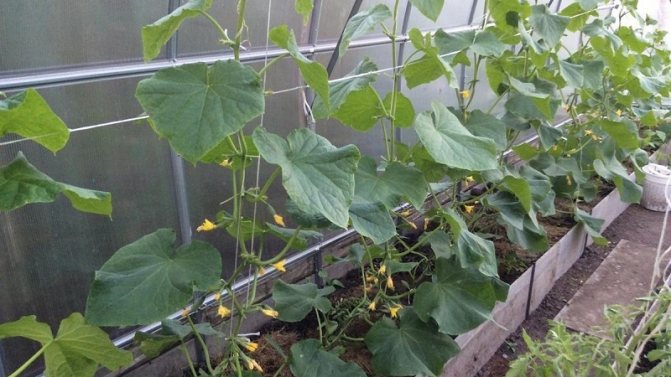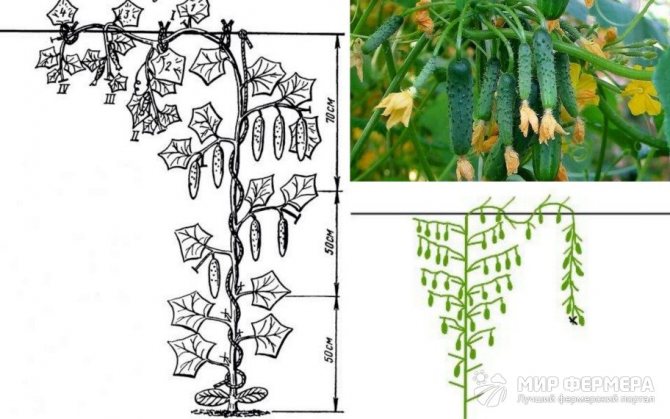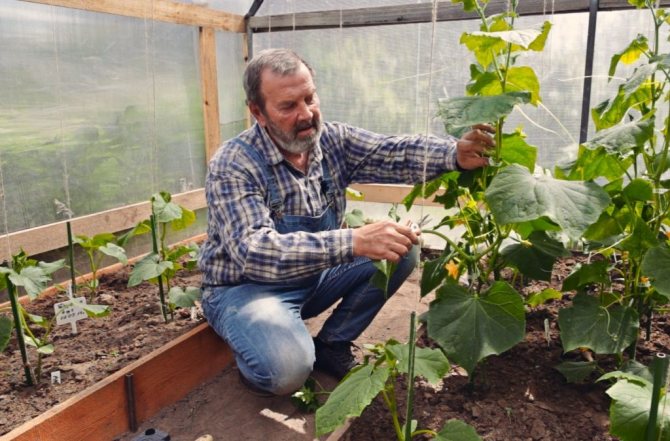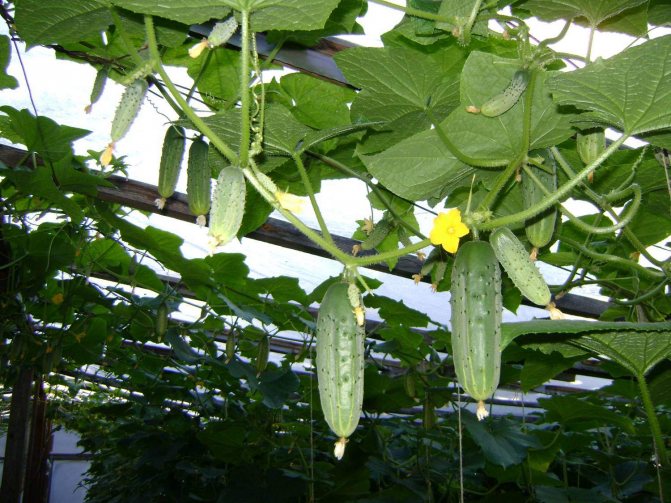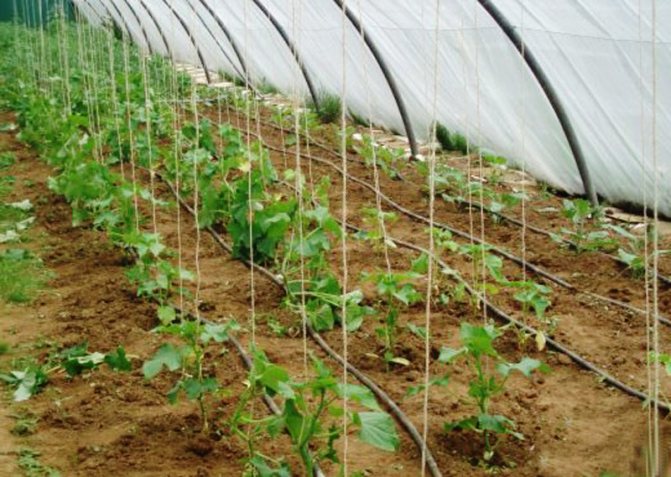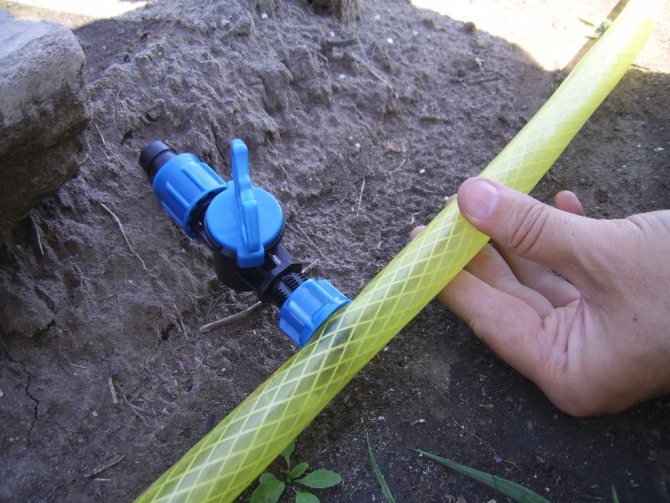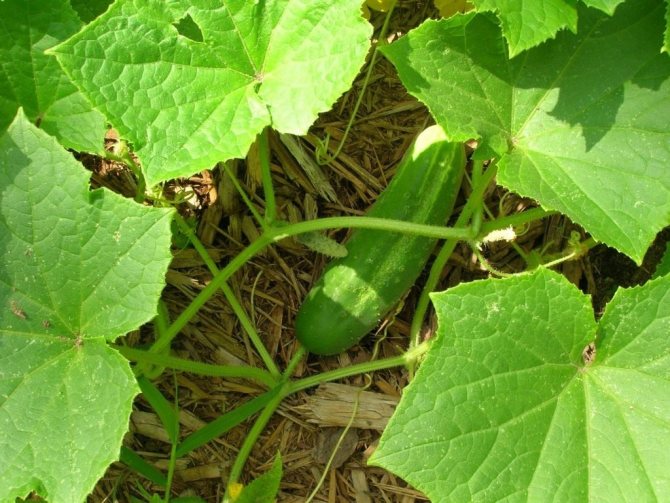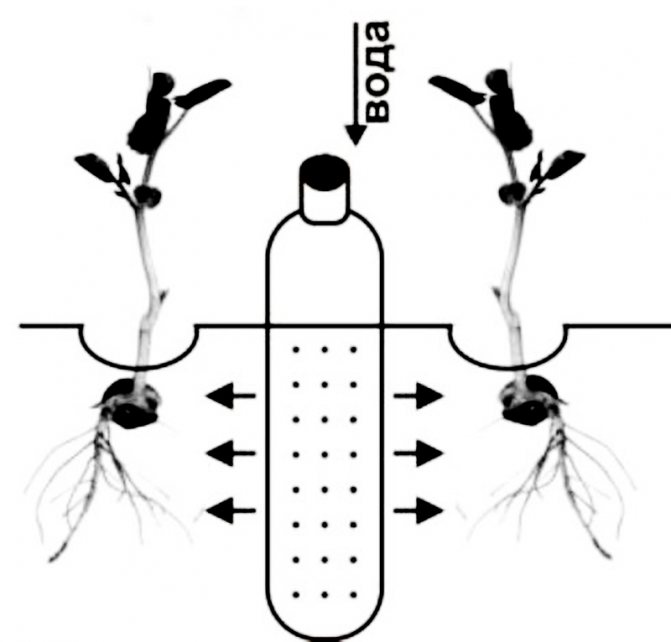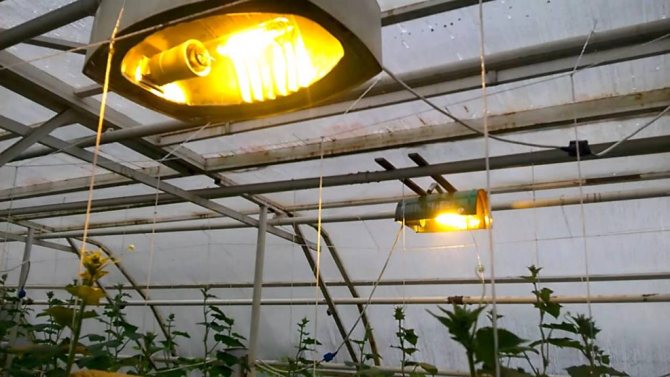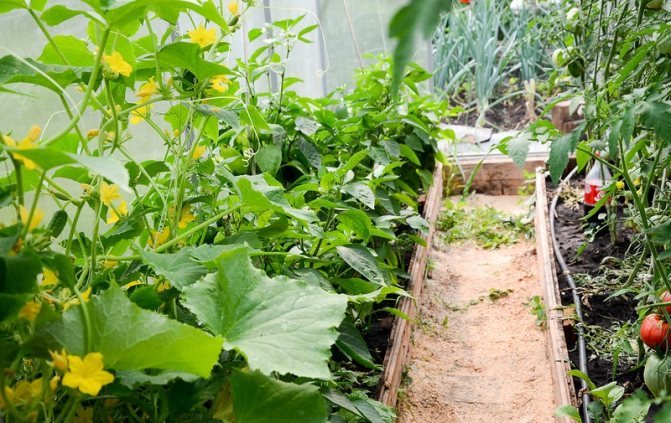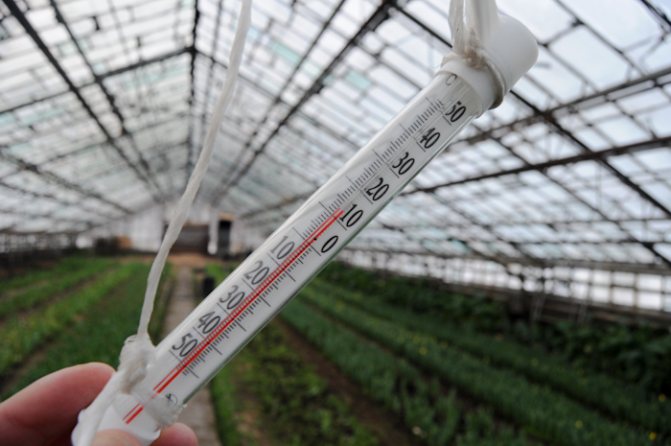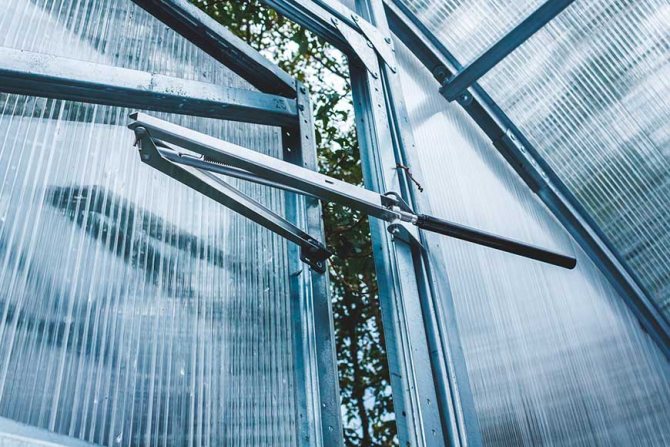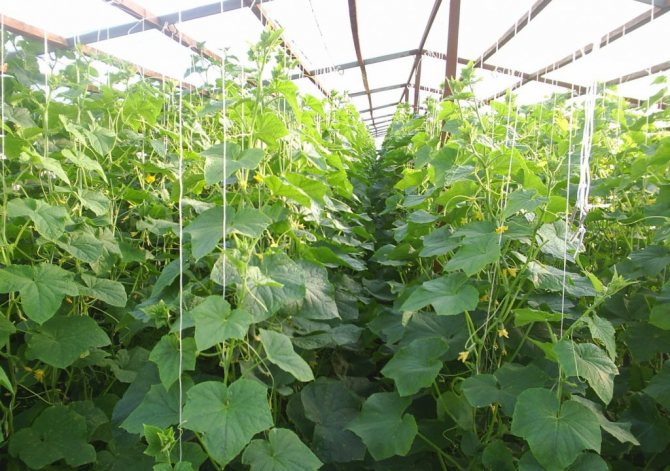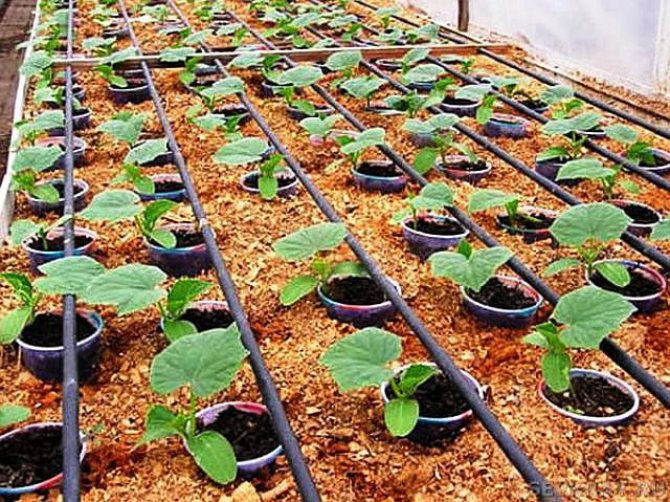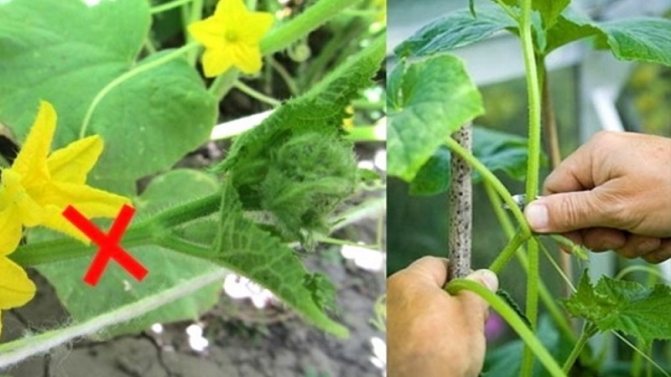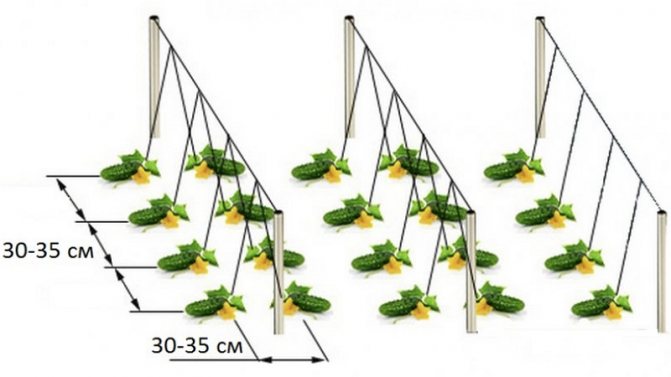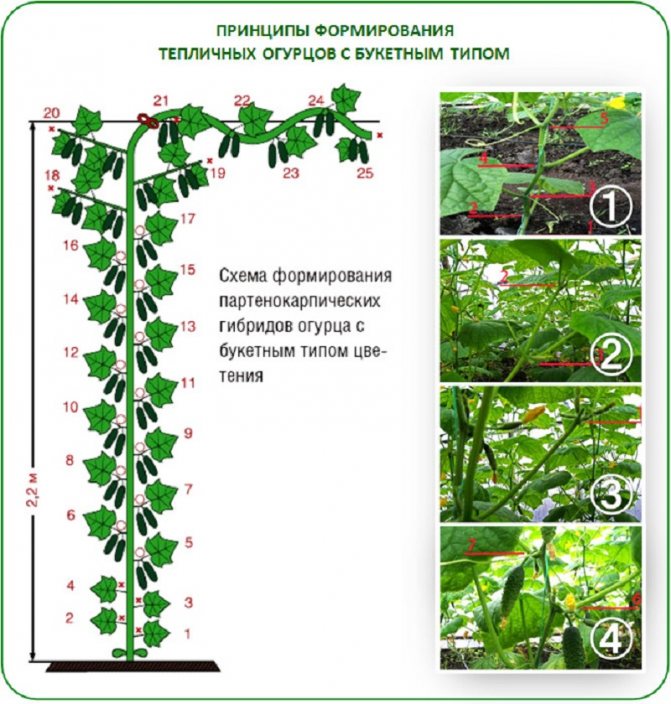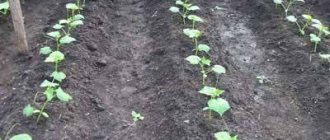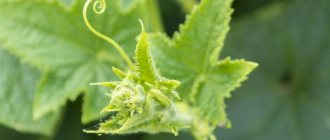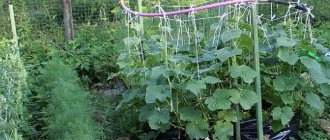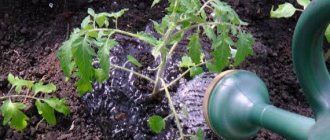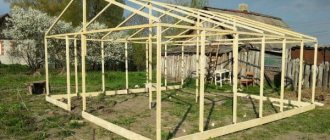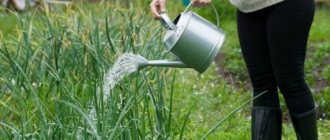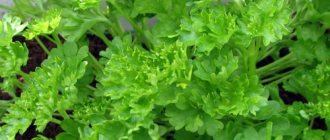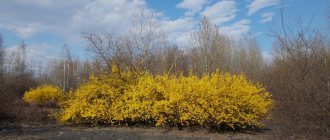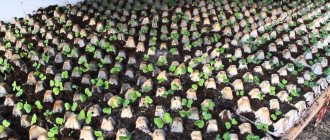Do I need to form cucumbers in the greenhouse
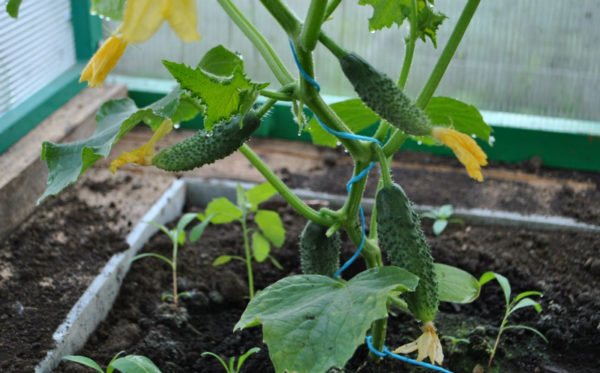
The question of whether or not the formation of a cucumber into one stem is necessary or not, is of interest to many gardeners. In the struggle for high yields, I want to find the most effective methods. This method involves getting rid of all unnecessary shoots and shoots on the bush and directing its growth in a certain direction. It concerns parthenocarpic varieties and hybrids grown in greenhouses and greenhouses.
With the correct procedure, an increase in the number of fruits obtained can be expected. Therefore, before carrying out it, you must carefully study the main recommendations. The formation of the bushes should be carried out in stages.
Important! The appearance of barren flowers is often caused by a decrease in air temperature, therefore, when the temperature drops, cucumber vines take cover.
What will happen if you do not form cucumbers
Only well-groomed garden plants can show their full fruiting potential. When growing cucumbers without proper attention, you cannot count on decent results. Launched beds with overgrown and matted tops will be more difficult for insects to pollinate. The fruits do not grow to the correct size.
Simple actions such as weeding and loosening of the soil are also becoming a problem. In the greenhouse, conditions are created that are suitable for the development of pathogens, pests appear: ants, slugs, a bear. Dealing with them is more difficult than preventing their invasion. All these factors negatively affect the amount of the crop and complicate the life of any summer resident.
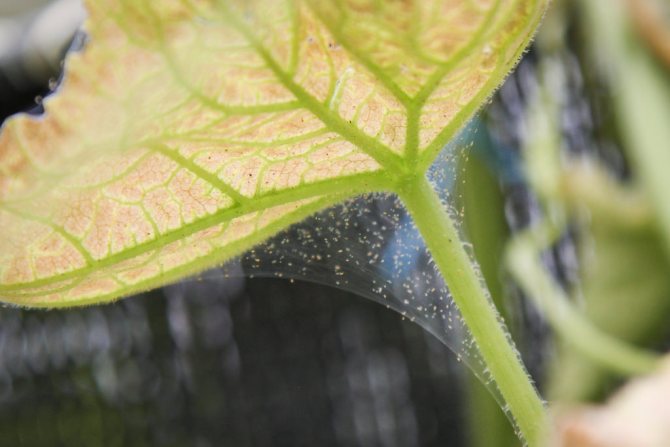

You may be interested in:
Fighting spider mites in a greenhouse on cucumbers If you are interested in the question of how to get rid of spider mites on cucumbers in a greenhouse, you should familiarize yourself with folk ... Read more ...
Pros of formed bushes in one stem
It is not difficult to form cucumbers into 1 stem, and the effort spent will pay off during harvest. In bundle varieties, 4-7 ovaries are formed in the nodes. They place increased stress on the conductor. Benefits of forming a cucumber into one stem:
- increased productivity - formed bushes grow faster, bear fruit more and longer;
- treated plants are less susceptible to various diseases and pests, due to normal ventilation and an abundance of sunlight;
- planting care becomes easier, the bushes do not intertwine with each other, they are easy to weed and loosen;
- obtaining larger fruits with a normal taste;
- the possibility of a denser planting of seedlings.
With the correct formation scheme, you can collect 15 kg of fruits from one square meter.
Important!
It is recommended to use rainwater heated by the sun for irrigation. it does not contain lime.
Growing conditions
In order for cucumbers in greenhouses to quickly adapt and be able to produce a high-quality harvest, it is recommended:
- Choose varieties of cucumbers intended for indoor cultivation.
- Maintain optimal temperature and humidity.
- Prepare fertile land.
- Decide on the method of pollination of flowers.
When choosing a place to install a greenhouse, preference should be given to areas protected from the influence of northern and northeasterly winds. It will be better if you equip a fence near it.
Do not build too large structures, it is enough to build a structure with an area of 2 by 1 meter. This greenhouse size allows vegetables and other crops to be grown regardless of external temperature changes.
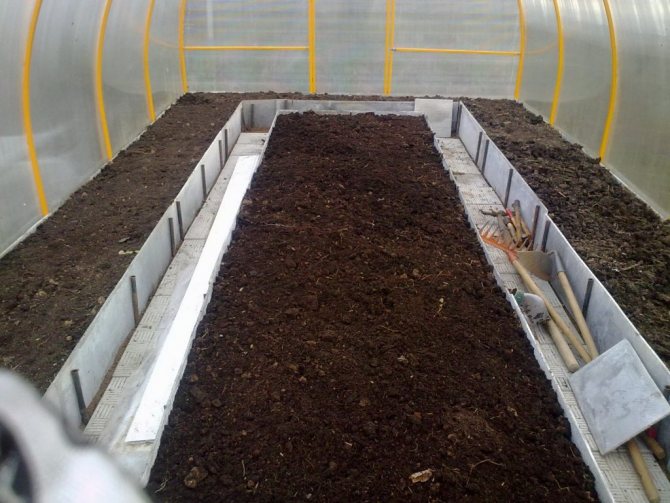

Compact greenhouse
Before planting seeds, it is necessary to disinfect in the greenhouse., having processed all wooden components with a solution of copper sulfate, and metal elements should be painted. In addition, you need to remove three to four centimeters of the top layer of the soil and add non-rotten manure (20-25 kg), lime (200 g), phosphorus and potassium compounds (50 g). All components are designed for 1 sq.m.
After that, you need to dig up the ground. During the preparatory measures in the spring, a special fat-free manure is introduced, which does not contain any pathogens.
The most effective soil option for cultivating vegetable crops is the following composition:
- 20% field soil, which is disinfected with a solution of 7% copper sulfate
- 30% humus
- 50% peat
- sawdust
back to menu ↑
See also: Raspberries: how to care for them to have a good harvest? In spring, summer, autumn and winter: features of watering, feeding, pruning of shrubs and its remontant varieties
Scheme of the formation of bushes


The formation of cucumbers in a polycarbonate greenhouse is carried out in two ways. The difference lies in the number of stems. Each type of cucumber has its own characteristics. Parthenocarpic varieties are characterized by a large number of shoots, the bulk of which are female. But only a fifth of them bear fruit. Several stepsons emerge from one ovary. The rest of the shoots will die off by themselves due to lack of moisture or nutrition. Therefore, the formation must be started on time. Bee-pollinated and branched varieties do not need such treatment. The central stem consists mainly of male shoots, while the female ones are located on the sides. Removing them will result in crop loss.
If it is not entirely clear how to form cucumbers into one stem, watching videos, of which there are a lot on the Internet, will help. It's simple - in the first 4 sinuses, ovaries, flowers and stepsons are plucked out. In the next nodes, the ovaries already remain in place, and the shoots are removed one at a time along the entire length of the main stem. In the case of a bunch hybrid, which has a low degree of branching, you will have to spend less time on such an operation.
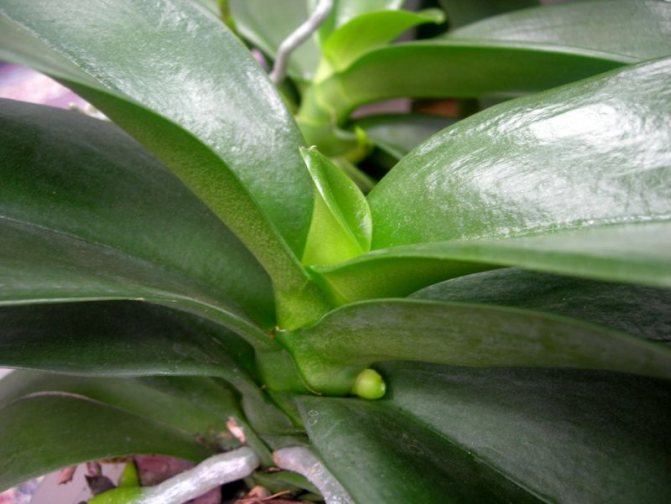

You may be interested in:
How to get and grow an orchid flower stalk at home An important part of the plant is the flower stem of the orchid, it is responsible for the beauty and flowering of the flower. The buds are formed in 50-60 days ... Read more ...
How to form whips and is it always necessary
A greenhouse shouldn't look like a jungle. Dense thickets are predictable when the gardener did not take care of the timely formation of the vegetable. In order not to get a forest from cucumber grass instead of harvesting, you need:
- Find the first three true leaves and remove the buds and shoots from them. This will give an impetus to the growth and formation of a large number of ovaries.
- At a height of up to half a meter, break off the side shoots completely, for the next 50 cm, leave each of these with a single leaf. Three leaves are left at a distance of 100 to 200 cm from the root.
- All lateral mini-processes found on the second row must be pinched onto one leaf. The higher the plant is, the more shoots are allowed. We throw the main trunk through the trellis, pinch it again, leaving from 40 to 60 cm.
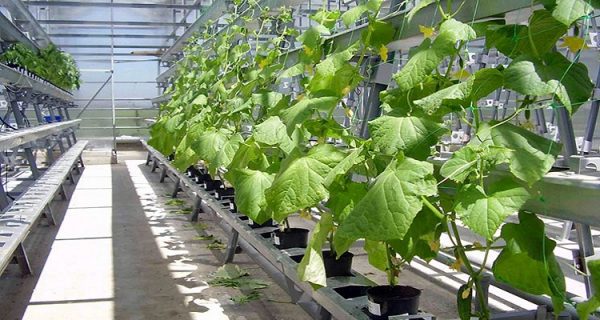

A proper greenhouse with cucumbers is not like a rainforest.
Table 1.Requirements for the formation of lashes in cucumbers of different varieties.
| The need for manipulations to form a bush | general characteristics | Variety |
| Frequent | Hybrids prone to the formation of a large number of branches, bred for cultivation in a greenhouse. | Moscow greenhouse; Juventa and Rodnichok; Epic and Ritual; Topolek and Vilina; Malachite and NIIOH 412. |
| Rare | Hybrids with little lateral branching. | Zozulya and the Golden Cockerel; April and Understudy; Gribovchanka and TCXA 3707. |
| Absent | Varieties with flowers in one ovary. | Brigadier and Unbearable; Muromsky and Libelle; others. |
Garter
Greenhouse cucumbers need special care throughout the season. About a week after planting seedlings, it is time to start tying seedlings. There are two varieties. With a vertical garter, you will need a trellis at the top of the greenhouse. One end of the twine is attached to the stem of the seedling under the second leaf, and the other is attached to the structure. The stem of the plant will get thicker as it grows, so the loop should not be tightened too much on it. If the rope is too tight, there is a danger of pulling the stem out of the ground, and if it is weak, it will dangle.
In the case of the horizontal tie method, the support is created using a wire pulled over the stakes. It looks like a ladder, where the steps are located at a distance of 30 - 40 cm from each other. As they grow, the stems are fixed on them. You can also use the now popular cucumber net. The plant independently climbs it with its antennae.
Important!
Using twine made from natural materials will help prevent slipping.
Greenhouse preparation
Before planting cucumber seedlings or sowing seeds in a greenhouse, it must be prepared. To do this, carry out a certain list of works that contribute to the health and proper development of plants in it. Greenhouse preparation begins with preventive maintenance and gardening.
Preventive maintenance in spring
First of all, they check the integrity of the frame and cover of the greenhouse. If the snow has not melted yet, clean the roof surface from snow. The soil around the building is 1.5–2 m free of snowdrifts and covered with a black film for faster warming up.
Examine the surface of the coating. The film is changed annually. For polycarbonate, the places to be replaced are determined. These can be various deformations, darkened parts. Remove damaged fragments and replace with new ones.
In a wooden greenhouse, the condition of the frame is checked, rotten parts are replaced, and the loosened ones are strengthened. The metal base of the greenhouse is inspected, revealing rusted or bent places, leveled, cleaned, replaced if necessary.
The inner surface of the greenhouse is disinfected by washing with a dark pink solution of potassium permanganate. The soil in the beds is also disinfected by pouring a boiling solution of a slightly pink solution of potassium permanganate. With a strong infection with diseases and pests last season, you can use special sulfur bombs to disinfect the greenhouse, but such treatments are harmful for metal structures.
Video: preparing the greenhouse for planting cucumbers in spring
Arrangement of beds
If the greenhouse is new, the method of growing cucumbers in it and the type of beds are determined. They can be very different:
- Low, level with the soil.
- High (warm), with sides 40-60 cm high.
- Racks for containers with soil.
You can grow cucumbers in different ways:
- On vertical supports: cords, ropes.
- On a vertical grid.
- In pots, bags or other containers.
To make a warm flat bed in the greenhouse, they dig a trench 20–25 cm deep, fill it with organic debris, cleanings, chopped branches, weeds, foliage, etc. Lightly sprinkle with earth and watered with hot water to cause heating.Then they completely fall asleep with the removed earth and cover with a dark film. If the bed is in a box, the organic matter should occupy 2/3 of the depth, and the layer of fertile soil should be at least 15–20 cm. In two weeks, you can plant it.
Photo gallery: arrangement of beds in a greenhouse and methods of growing cucumbers
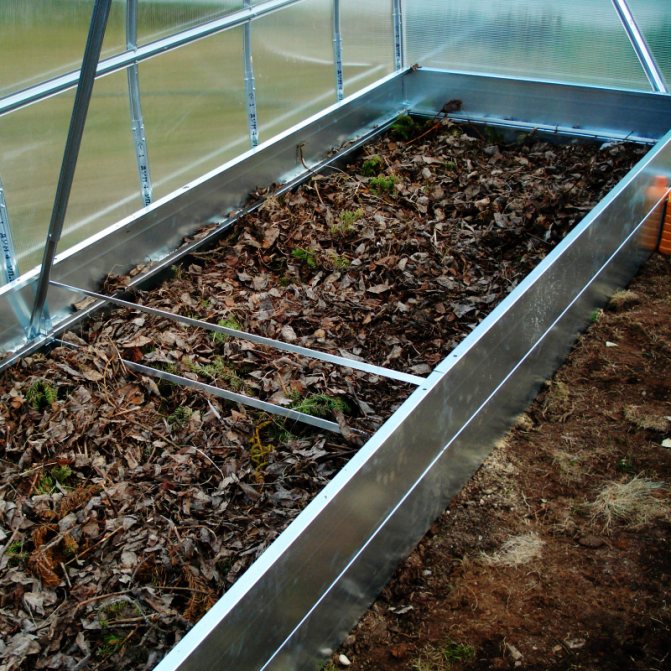

Any organic matter is suitable for filling a warm garden bed in a greenhouse.
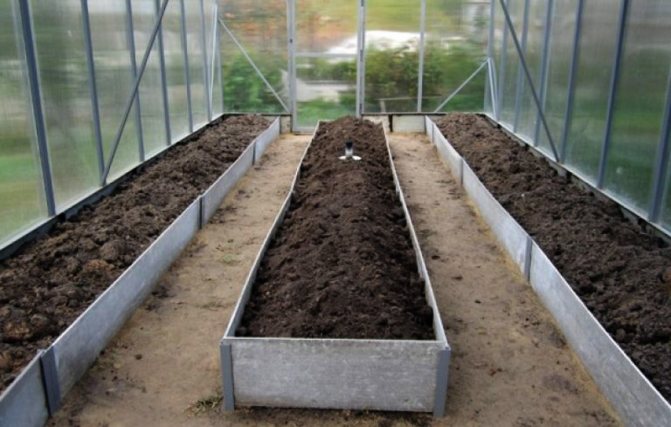

A wide variety of materials are used to frame tall beds in the greenhouse.
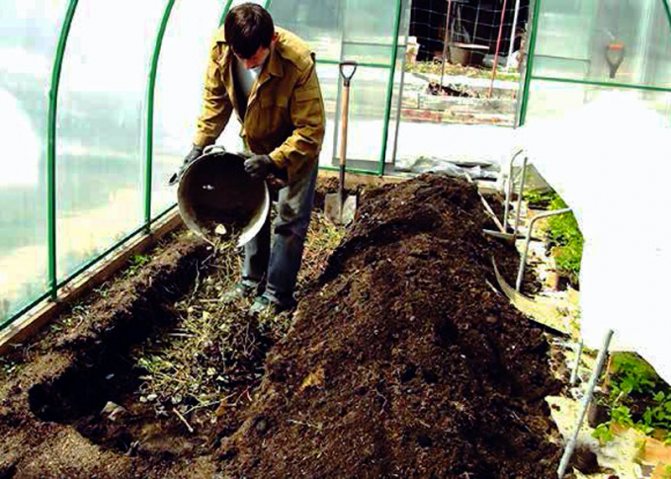

A warm bed in a greenhouse can be made without framing by boards, by digging out a trench and filling it with organic debris
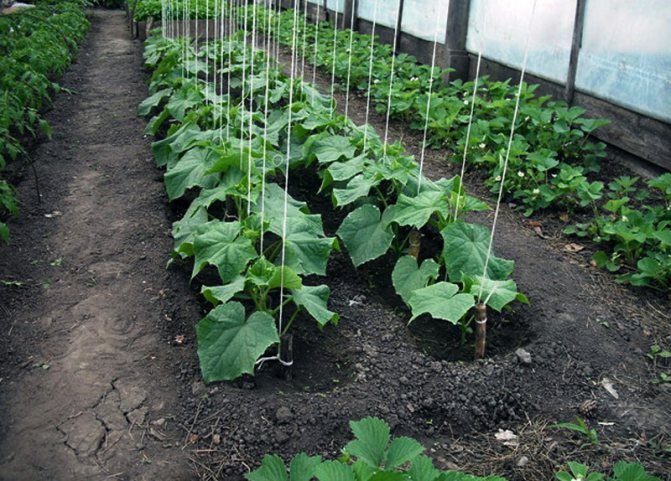

The guides for the vertical garter of cucumbers are installed simultaneously with the planting of seedlings in the greenhouse
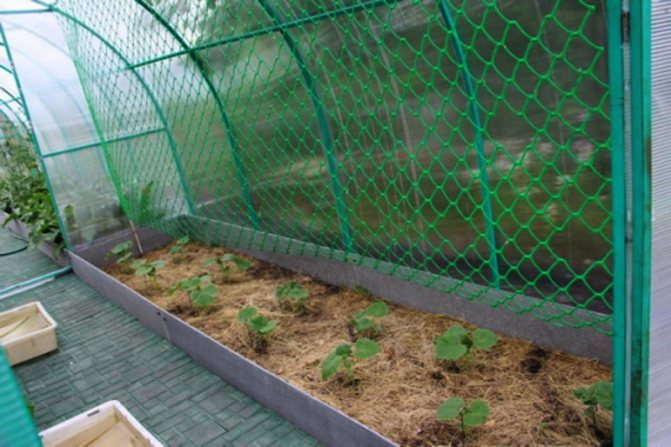

As it grows, the cucumber lashes will attach to the net.
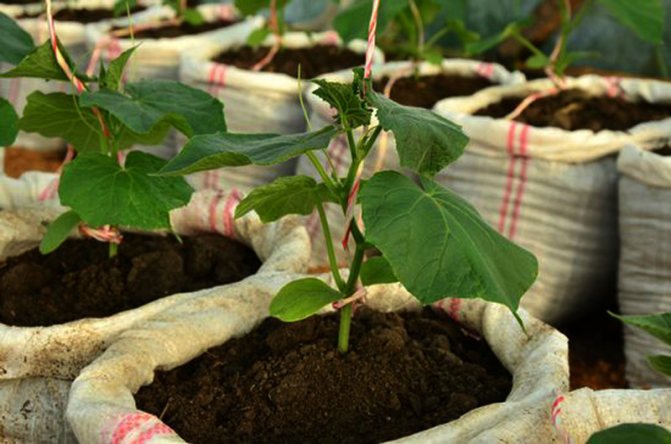

Growing cucumbers in bags saves time on arranging the beds in the greenhouse
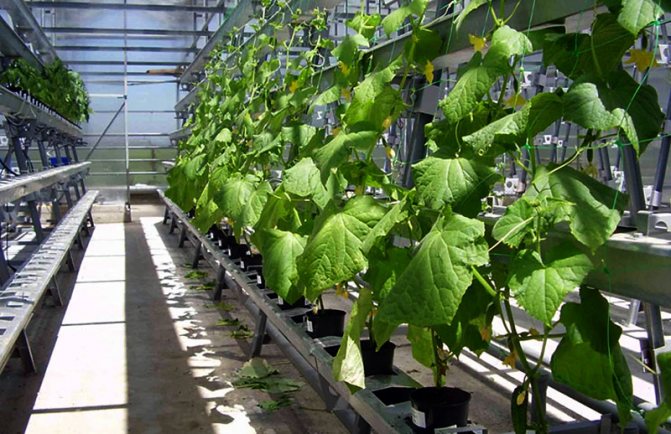

In the greenhouse, instead of beds, you can put racks for placing pots of cucumbers
The soil in the beds, especially if only cucumbers are constantly grown in the greenhouse, must be renewed. To do this, it is not necessary to take out the old soil and replace it with a new one. It is enough to add 1-2 buckets of humus for each running meter of the bed, water the bed with the addition of any EM preparations (Baikal-EM1, etc.) and cover it with a dark film for warming up. This should be done no later than two weeks before planting seedlings in the ground.
Watering and feeding
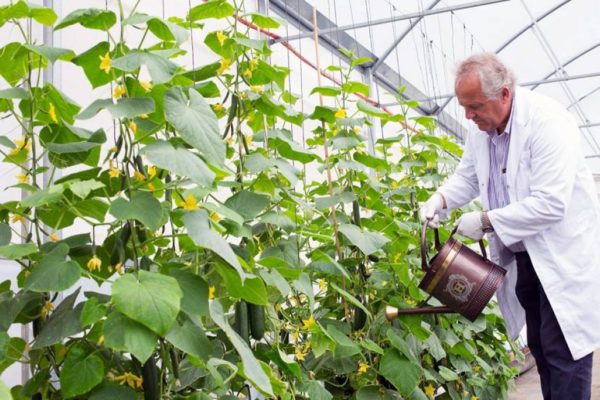

The cucumber needs plenty of regular watering. But stagnant moisture can cause rotting of its root system. It is very useful to irrigate the green parts of the bush. To do this, you can install an automatic drip irrigation device. Mulching the soil will allow the soil to retain moisture for longer.
Water for irrigation is taken warm, cold will have a bad effect on the state of the plantings. After watering, the soil is loosened to prevent the formation of a dry crust. The use of a watering can sometimes leads to the exposure of the roots, so from time to time it is necessary to scoop up the soil to them.
The soil in the greenhouse is subject to rapid depletion. Therefore, it will not work to grow cucumbers without additional feeding. Fertilizing regularly will help avoid nutritional deficiencies. But you shouldn't do it more than 5 times per season. The type of feeding is selected depending on the stage of plant development and is introduced step by step.
Active growth of seedlings occurs 14 days after planting. At this time, you need to apply a complex fertilizer containing phosphorus, nitrogen and potassium. During the period of mass flowering, the bushes need a mixture of nitrogen and potassium, boron and magnesium will also be useful to them. During fruiting, mineral and organic fertilizers are especially needed.
Important!
A constant temperature must be maintained in the greenhouse, overheating of plantings and lack of ventilation are unacceptable, therefore ventilation is necessary.
Problems likely when growing cucumbers
There are several of them. Let's consider each separately, as well as the reasons and possible solutions. So:
The branches of the lower part dry
This is due to a lack of moisture in the hot summer. Against the background of problems with the lower tier, the upper one looks quite normal and even pleases with ovaries. We proceed as follows:
- little by little, day after day, we remove the leaves from the bottom;
- we fold the stem into a ring and put it on the ground;
- carefully "fasten" it to the ground with a wire fork so that the top, with all the leaves and flowers, remains higher;
- we provide watering and care.
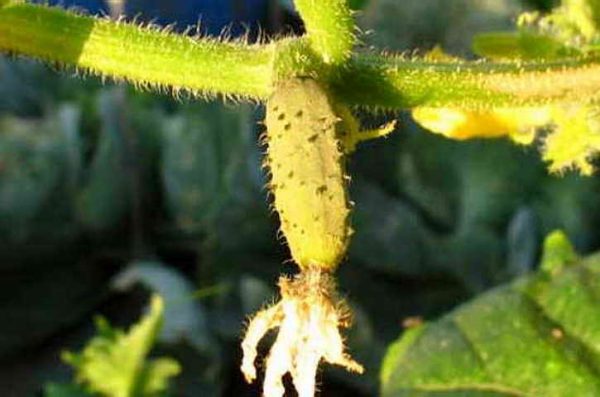

In diseased plants, the ovaries turn yellow and fall long before they are fully ripe.
After a while, the deepened part of the stem will begin to grow a root, and everything will return to normal.
Ovaries are not formed
Bundle varieties of cucumbers, like hybrids, give bountiful yields. Each of the nodes contains up to 7 ovaries, but some may turn yellow and fall off even before they begin to grow. There are several reasons for this:
- too humid and / or hot;
- less than 10% of male flowers on the bush;
- a large number of ripe fruits on the lashes;
- insects do not fly in and do not pollinate plants due to bad weather;
- little nutrients in the soil.
The first problem is solved by reducing watering and ventilation. The latter is by feeding with a mixture of cow dung and urea, and when it comes to adult cucumbers, they just need to be removed on time. Do this daily, as the fruit grows.
Important! Do not allow cucumbers to grow more than 12 cm in length and 5 cm in thickness. When the lashes are hung with green giants, all the food goes to them, so new ovaries are not formed.
Fruits grow poorly
The "poultice" will help: on a sunny day, the greenhouse, as well as plants and soil, are watered and then closed for an hour. Ventilate carefully, without drafts.
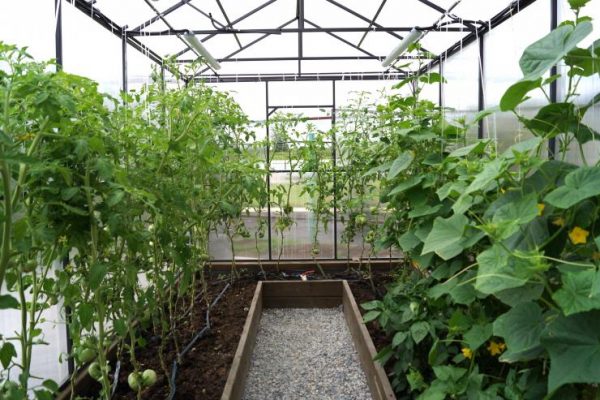

The poultice should be carried out with caution.
Bitter taste
This happens even against the background of normal watering, and the fault is the substance cucurbitacin, which is responsible for the taste. Its volume in a vegetable is determined by the growing conditions, the characteristics of the variety, and the duration of ripening.
Important! The longer the period from pollination to a full-fledged cucumber (8 to 12 days is considered the norm), the more bitterness it will have.
Removing side shoots and pinching
Shoots must be removed, otherwise they will draw strength and energy from the bush. They are not cut off, but cut off with sharp tools so as not to damage the tops. Lateral leaves are removed, flowers are removed in the first axils of 3 leaves. Lateral shoots are left only in the upper part of the bush. You can start the procedure when the stepsons reach a size of 3 cm.
Pinching is important for low-grained varieties when pinching is not needed. It stimulates the growth of additional branches, which are also fixed on the trellis. It is carried out no earlier than the stem reaches the top of the support. From the bottom of the plant, you need to count 7 nodes and pinch off the top. Side shoots appear in the sinuses. It is enough to leave only a few of the strongest, the rest should be removed. As the bush grows, its vine will wrap around the wire clockwise. You cannot twist and pull the whips, this will weaken the plant.
You may be interested in:
Why the ovary of cucumbers does not grow in the greenhouse Many summer residents and gardeners are wondering why cucumbers do not grow in a greenhouse, ovary is a lot, and does not grow. But this phenomenon ... Read more ...
Stepping
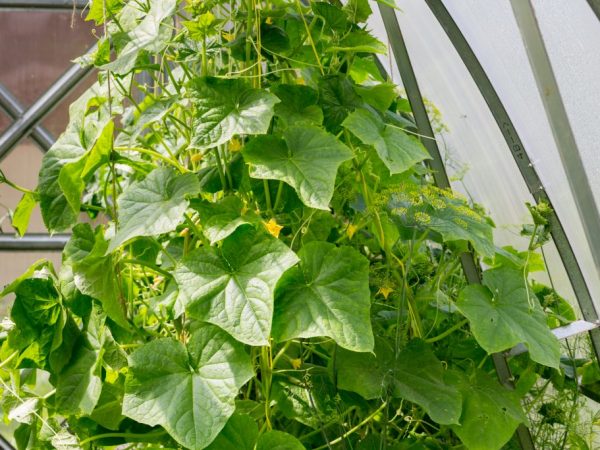

Grasshopping will provide light access to the plant
Grasshopping is one of the formation methods, which involves the removal of excess leaves and ovaries from the main stem. This generates the nutritional energy of the shrub and directs it to the desired area. If there are many branches on a cucumber, they overshadow each other, as a result, the bush grows faster in order to receive more sunlight. To prevent this from happening, pinching is done. In greenhouse conditions, it happens like this:
- In the lower part of the bush, remove all flower rudiments and lateral shoots up to 4-5 leaves. This is done so that the lower part has full ventilation of the stem. This is the only way to avoid the development of diseases and decay. This stage is called the prevention of root rot.
- When the plant grows to 0.8-1.0 m, 2-3 shoots no more than 20 cm long and 1-2 leaves are left on the bush.
- As soon as the cucumber grows to the 1.3 m mark, the lateral processes should be about 35-40 cm, 2-3 ovaries and the same number of leaves are left on each of them.
- At a height of 1.5 m, 4 leaves and 3-4 ovaries should remain on each side shoot.
- If the lashes have grown to the maximum possible height, they are immediately tied up. There is a small exception, which is possible with a low greenhouse ceiling. In such a case, the whip is thrown down for further growth. When less than 20 cm remains to the ground, pinch it to stop development.
Particular attention is paid to the thinning of the leaves on the upper part. This is done as carefully as possible so as not to harm the shrub.
Care before and after the procedure
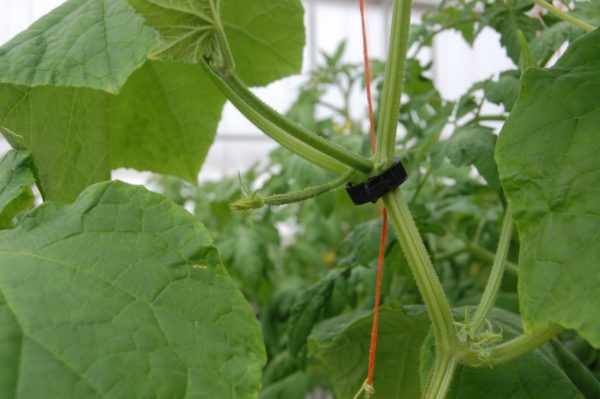

The best time to break off ovaries and shoots is morning. Damage received by the plant will "heal" by the evening, minimizing the risk of infection. During work in the greenhouse, the whips must not be turned over, otherwise the bushes will die. Getting rid of dried tops will give the cucumbers more light.
Cutting off shoots that have already stopped bearing fruit is important, because they can become a source of infection. After removing the parts, the plant will be weakened. It can be supported by feeding. Ready-made complexes of industrial production and herbal infusions prepared on their own will be equally useful.
Important!
If the moment of pinching was missed, you need to leave everything as it is, so as not to ruin the planting due to the loss of the growth point.
Harvesting
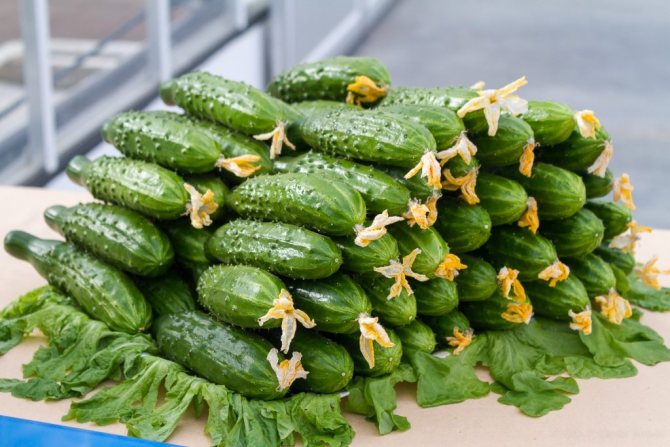

Very appetizing harvest
At the initial stage of fruit ripening, harvesting must be done in the morning. In the following days, it is more rational to harvest every day. If you do not collect greens in time, then the plant will produce fewer fruits.
In addition, deformed and damaged ovaries are subject to timely removal.
back to menu ↑
See also: [Instruction] How to pinch tomatoes in a greenhouse and open field: a step-by-step explanation of the correct procedure + Reviews
Prophylaxis
To maintain the health of cucumber beds, prevention against various diseases and harmful insects is very important. Without it, all work may be in vain. Such prevention implies the obligatory processing of the material for planting even before moving it to the garden.
If we are talking about seeds, then they are soaked in a solution of potassium permanganate or fungicidal preparation. Experienced gardeners periodically spray seedlings with nettle infusion. The drug "Oxyhom", which has a systemic effect, is effective against the fungus. It protects the plant from the outside and from the inside, neutralizing fungal spores.
Formation of tall (indeterminate) cucumbers
The varieties that develop in the form of vines are formed into several stems, since it is on the side shoots that they form the main crop.
Step-by-step formation procedure:
- In order for the stem to begin to bush, it is pinched after 4 or 5 leaves, having previously tied it to a support.
- When two shoots are formed on top, twines are tied to the upper wire from different sides for them.
- As the shoots grow, they are stepson so that tillering is carried out evenly on both sides.
- When the side shoots grow to the wire on the trellis, they are thrown over, allowed to grow and pinched a meter above the ground.
Testimonials
Alexei
I decided to plant cucumbers in my summer cottage, but I had never heard of the formation of one stem in them before. The amount of harvest in the first year did not please me, I began to look for ways to increase it. On the thematic forum I learned what actions should be taken. I tried a new method and was convinced of its effectiveness - I managed to remove more cucumbers from each bush.
Rita
I accidentally heard about such a technique as the formation of a cucumber bush. At first I did not understand its essence, but then I studied the descriptions and photos on the network and was imbued with the idea. The harvest last summer was a record one, thanks to the authors of this technique! The main thing is to act carefully so that the plants do not die due to injury to their delicate structure.
Cucumber plantings, in addition to watering and weeding, need additional care. The scheme for the formation of a bush in one stem is relevant only for greenhouse plants of a certain variety. Its use increases productivity and strengthens the immunity of the bushes. If there is no time for pinching, then it is better to choose varieties that do not need it.
Male and female flowers: what is the difference and why are they needed
Their main difference is that the former have stamens, but at the same time are barren flowers, and the latter are devoid of pollen, but they give ovaries.Pollination is necessary for the formation of fruits, so both "girls" and "boys" are needed. Moreover, when there are too many "guys", their number can be reduced.
The active formation of female flowers occurs at the beginning of the vegetative process, especially if the temperature is slightly reduced. Smoke also contributes to their appearance, so vegetable growers periodically "smoke" the beds.
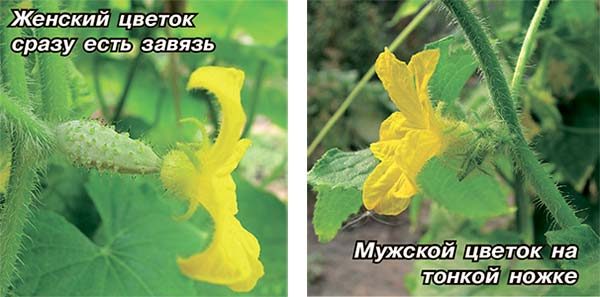

Male and female cucumber flowers.
There are always more male inflorescences on the main stem than on the lateral ones. Their number increases with abundant watering, as well as in the case of growing seedlings from the seeds of last year's harvest. Planting density also matters: when there are more than 5 plants per square meter, the percentage of male flowers increases.


